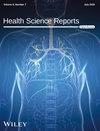Spatial and Temporal Distribution of Pediatric Cancers in Southern Ghana: A Retrospective Observational Study
Abstract
Background
More than 80% of children living with cancer reside in developing countries like Ghana, with over 1000 new cases projected each year. Spatial analysis of pediatric cancers provides insights into possible environmental risk factors, potential genetic associations, and the identification of clusters or hotspots, which can guide further investigation into causal factors and inform population-level interventions.
Aim
This retrospective observational study aimed to investigate the spatial distribution dynamics of pediatric cancer cases diagnosed at the Komfo Anokye Teaching Hospital, Ghana.
Methods
Poisson regression and spatial statistical tools, including Kernel Density Estimation (KDE) and Kulldorff's spatial scan statistics, were used to analyze 652 pediatric cancer cases recorded from 2018 to 2022 in Southern Ghana.
Results
The results revealed increasing pediatric cancer cases over the 5 years. Burkitt Lymphoma, Leukemia, Nephroblastoma, Other Non-Hodgkins Lymphoma, and Retinoblastoma had higher incidence among children, with males having a 24% higher incidence rate compared to females (Incident Rate Ratios [IRR] estimated at 1.24 at p < 0.01, 95% confidence interval [CI): 1.06, 1.45). Further, the KDE plot consistently revealed a high density of reported cases in the central part of the study area, with a noticeable directional diffusion of pediatric cancer cases toward the northwest from 2018 to 2022. Three significant clusters of relative risk between 1.65 and 2.17, p < 0.01, were identified, covering parts of the Bono East and Ashanti Regions of Ghana.
Conclusion
Clustering cancer cases could suggest a possible environmental influence on the occurrence of the disease. Although this study offers relevant baseline information, comprehensive epidemiological investigations are necessary to establish specific environmental risk factors and potential gene-environment interactions contributing to this pediatric cancer clustering.


 求助内容:
求助内容: 应助结果提醒方式:
应助结果提醒方式:


